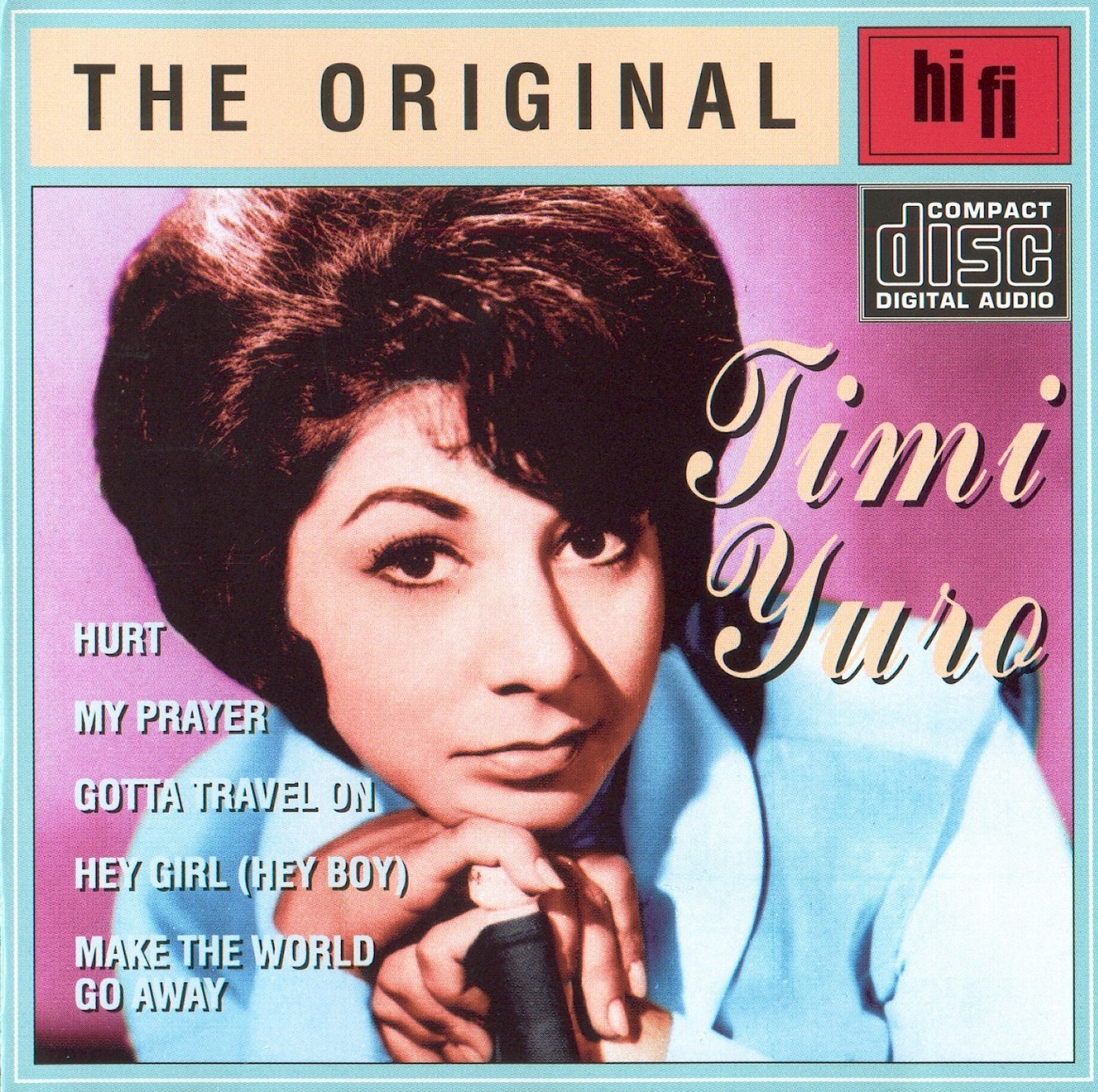


Its follow-up, "Insult to Injury," went no higher than number 81 when it hit radio a few months later.įollowing Ray Charles' successful embrace of country & western material, Yuro next covered Hank Cochran's "Make the World Go Away," scoring her last significant U.S. The team of Burt Bacharach and Hal David penned Yuro's next single, "The Love of a Boy," which climbed to number 44 in early 1963. The completed single bears all the hallmarks of the classic Spector sound, from its elegant string arrangement to its insistent rhythm to Yuro's righteously indignant vocal, and would prove her biggest hit since "Hurt," reaching number 12 on the pop charts and number 16 on its R&B counterpart. And despite its title, Yuro's sophomore LP, Soul!, proved to be a collection of standards, although she returned to her R&B roots with the superb Drifters homage "Count Everything." During sessions for her next effort, "What's a Matter Baby," producer Otis abruptly quit Liberty, and the masters were handed to his interim replacement, Phil Spector.
#TIMI YURO DEATH CRACKED#
While the exposure no doubt boosted her profile, it was instrumental in crystallizing the growing public perception that she was more a cabaret performer than a soul singer, an image that was further established with her fourth single, a revival of "Let Me Call You Sweetheart" that went only as high as number 66 on the pop charts but cracked the easy listening Top 20.

Yuro spent early 1962 opening for Frank Sinatra on a brief tour of Australia. Her follow-up single, a cover of the Charlie Chaplin composition "Smile," climbed to the number 42 spot in late 1961, and Liberty wrapped up the year with the release of "I Believe," a one-off effort pairing the singer with pop heartthrob Johnnie Ray. No doubt viewers on both sides of the color line were shocked when Yuro's accompanying television appearances revealed this deeply emotional ballad was the work of a 20-year-old white woman less than five feet tall. A remarkably mature and assured debut record, "Hurt" peaked at number four on the Billboard pop charts that autumn, in addition to reaching number 22 on the R&B charts. She then performed an a cappella reading of the 1954 Roy Hamilton R&B hit "Hurt," so impressing the Liberty brass that in June 1961 Yuro entered the studio with producer Clyde Otis to record the song for posterity. But Yuro found Liberty's choice of material so frustrating that after months of recording lightweight demos ill-matched to her resonant, commanding voice, she crashed a 1961 label board meeting, vowing to Bennett and his colleagues to tear up her contract if they did not let her cut more appropriate material. However, her subsequent performances at their Hollywood restaurant Alvoturnos would not only pull back the eatery from the brink of bankruptcy, but vault it into the ranks of Tinseltown's hottest destinations.Ī late 1959 Alvoturnos performance convinced Liberty Records talent scout Sonny "Confidential" Knight to recommend Yuro to label head Al Bennett, who immediately offered the singer a recording contract. By the middle of the decade, Yuro was performing in nightclubs, much to the chagrin of her parents. After adopting the phonetic spelling of their surname, the Yuro family relocated to Los Angeles in 1952, where Timi studied under voice coach Dr. Born Rosemarie Timotea Aurro in Chicago on August 4, 1940, she was the product of an Italian-American family that owned a local restaurant as a child she received voice lessons, and according to legend, her nanny also snuck her into the Windy City's legendary blues clubs, where Timi (a childhood nickname) witnessed life-altering live appearances by singers Dinah Washington and Mildred Bailey. Her million-selling debut single, "Hurt," introduced a performer of such profound poignancy and depth that many listeners assumed she was a man, an African-American, or both, and while Yuro never again achieved the same commercial heights, her finest records deserve mention in the same breath as Aretha Franklin, Irma Thomas, and the other soul queens of the era. "The little girl with the big voice," Timi Yuro was America's finest white soul singer of the 1960s.


 0 kommentar(er)
0 kommentar(er)
